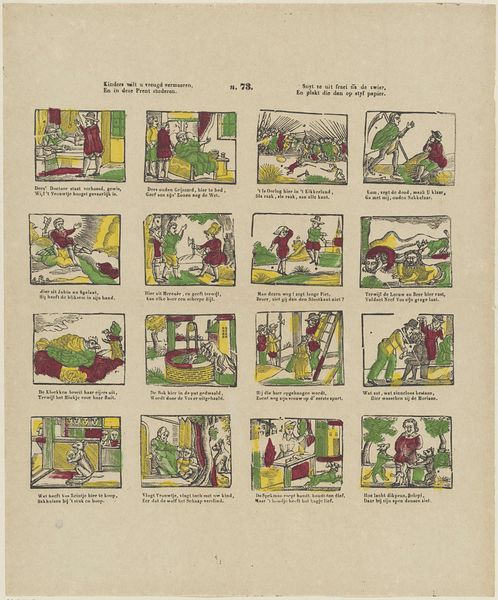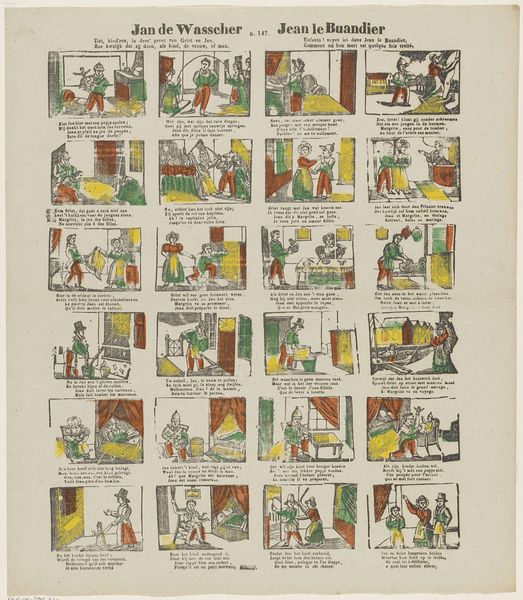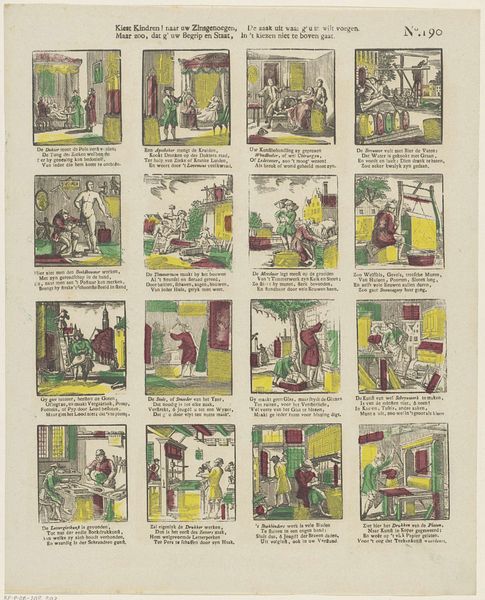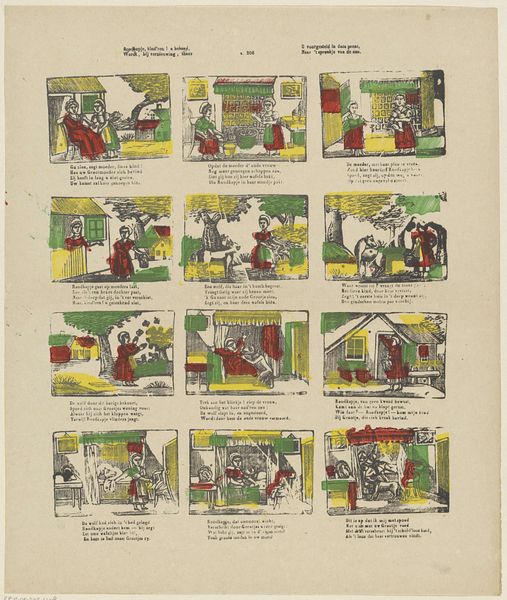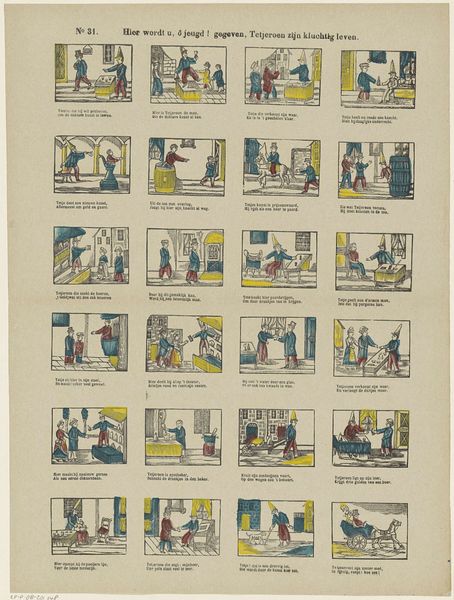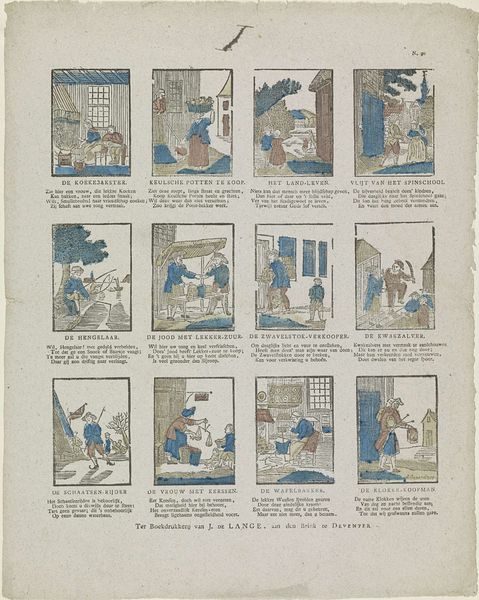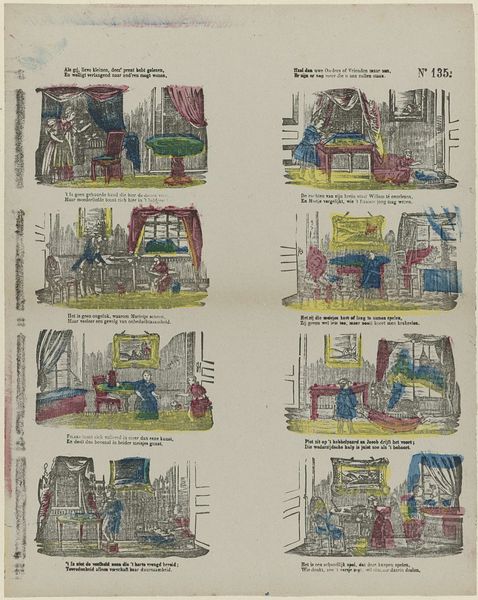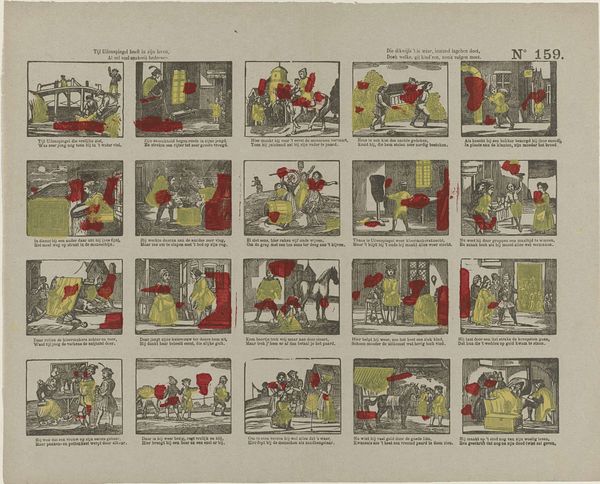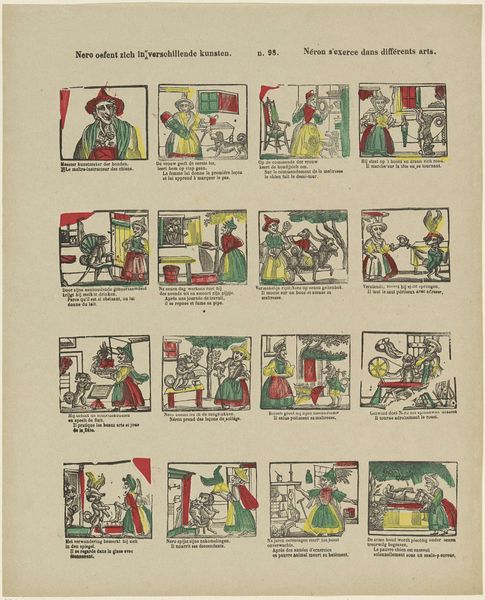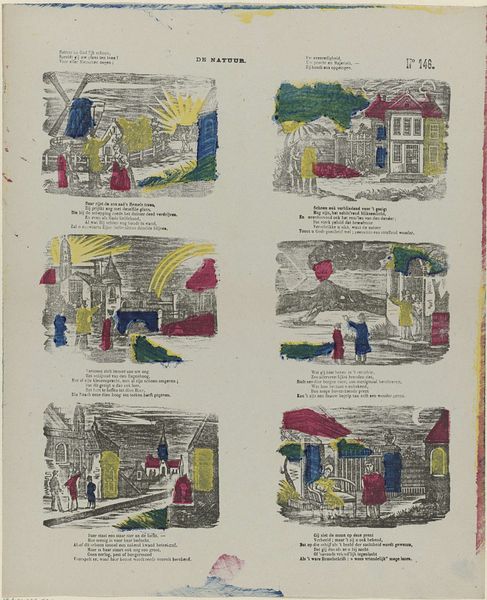
De kunst heeft lieve jeugd voor u in prent gezet, / 't gezellig A, B, C, het nuttig alphabeth 1827 - 1894
0:00
0:00
alexandercranendoncq
Rijksmuseum
drawing, print, paper, typography, engraving
#
portrait
#
drawing
# print
#
figuration
#
paper
#
typography
#
line
#
genre-painting
#
history-painting
#
academic-art
#
engraving
#
realism
Dimensions: height 382 mm, width 310 mm
Copyright: Rijks Museum: Open Domain
Curator: Here we have a printed sheet dating from somewhere between 1827 and 1894, currently held in the Rijksmuseum's collection. Its title reads "De kunst heeft lieve jeugd voor u in prent gezet, 't gezellig A, B, C, het nuttig alphabeth". Editor: It strikes me as charmingly quaint! Each letter is represented by a small scene, each a vignette. The limited color palette—mostly blues, reds, and yellows—gives it a sort of antique cheerfulness. Curator: Precisely. These images, rendered using engraving techniques on paper, would have served an educational purpose. Note the use of typography alongside figuration; both elements play key roles. Each miniature illustration corresponds to a letter of the alphabet, aiming to teach children through association. Think about the socio-economic context: accessible, reproducible imagery serving the labor of education. Editor: And look at the details within each scene! "A" shows a rural landscape with a windmill; "C" features a surgeon; "O" depicts an elephant—symbols that, to a child in that era, would have held particular cultural weight. It’s fascinating how the mundane and the exotic are juxtaposed. Each symbol helps ground the abstract nature of the letter to something concrete within the child's known world. Curator: Beyond simple recognition, it's crucial to understand the choices of trades or subjects depicted, like "Butcher", or professions that underscore industry and craftsmanship that speak to a specific social ideology and perhaps, production practices of the time. The selection hints at what was considered culturally important. Editor: Right, these visual narratives offer a glimpse into the collective memory of that time, not just daily activities, but also societal aspirations conveyed through imagery. Each vignette acts like a micro-story, preserving ideals about work, life, and civic values, and conveying a story to our present day as well. Curator: It really pushes us to re-evaluate what "art" encompassed for everyday lives back then. It's function intertwined with a nascent sense of visual literacy. Editor: Definitely makes one ponder the endurance of visual symbolism across generations and the role these tools play in transmitting a particular idea of world, and its significance as we consider it today.
Comments
No comments
Be the first to comment and join the conversation on the ultimate creative platform.

